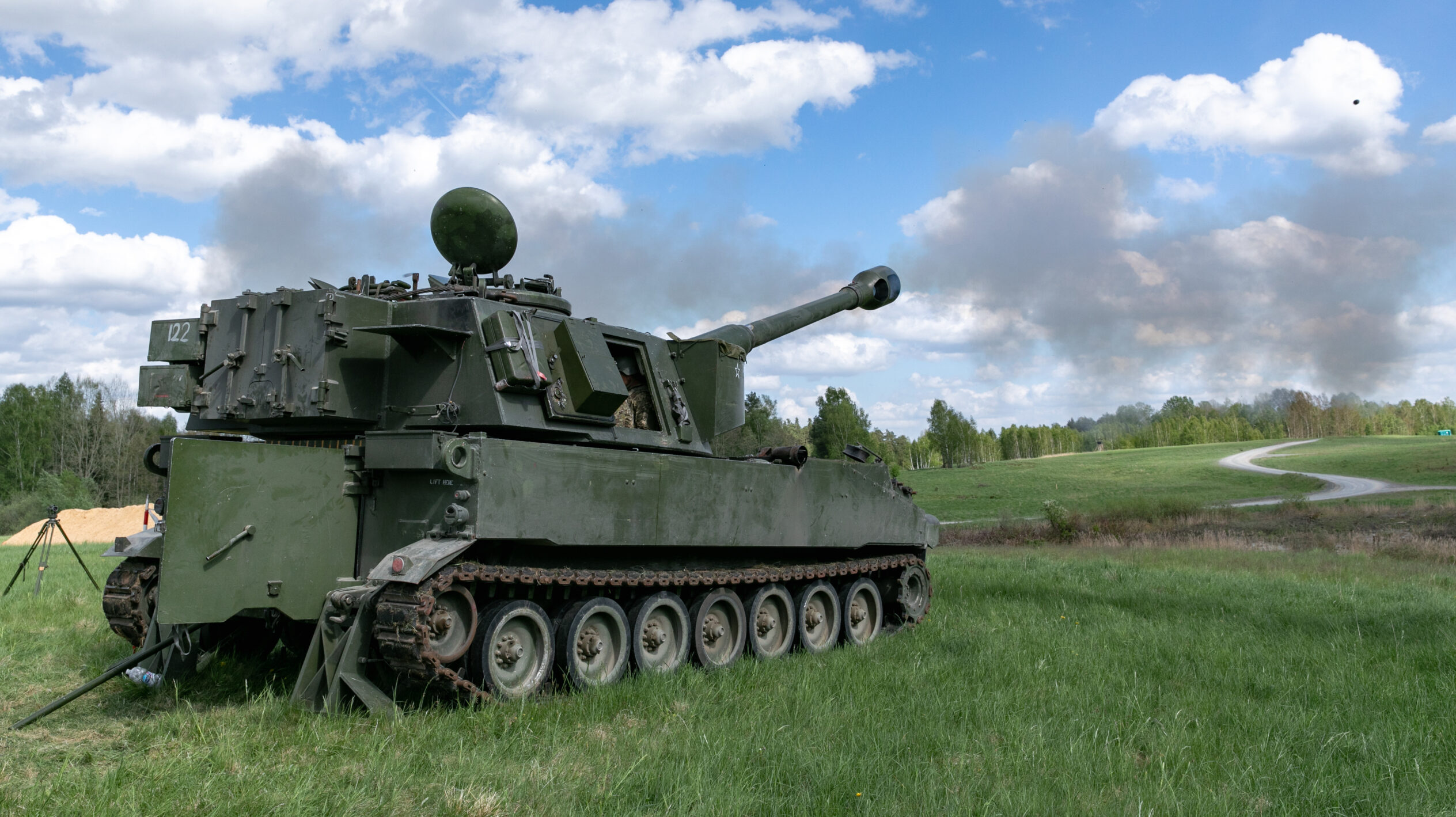
Ukrainian artillerymen fire the M109 self-propelled howitzer during training at Grafenwoehr Training Area, May 12, 2022. Soldiers from the U.S. and Norway trained Armed Forces of Ukraine artillerymen on the howitzers as part of security assistance packages. (U.S. Army/Sgt. Spencer Rhodes)
WASHINGTON: The Defense Department agency responsible for overseeing foreign arms sales would like to have a presence on the ground to monitor the use of US weapons in Ukraine, but when that will happen is still unclear, its deputy director said Thursday.
“We do think that over time, we would like to be able to extend our insights with a greater presence on the ground going forward,” Jed Royal, deputy director of the Defense Security Cooperation Agency, told reporters during a roundtable.
During peacetime, DSCA sends personnel to a foreign nation to open warehouses and arms bunkers to examine equipment and check the serial numbers of high-value weapon systems, Royal said. “Right now, in Ukraine, that’s just not available to us as a tool.”
Currently, DSCA has personnel stationed in Europe that work directly with Ukrainians on arms transfers occurring outside of Ukraine, using paper receipts to track weapons as they move down echelon. However, those officials are “somewhat limited” in their ability to do more robust monitoring of US made weapons, Royal said.
“Once we have more people in country, we should be in a position to actually go do more physical validation [and] verification, going forward,” he said. “That’s the kind of thing that we’re looking for here. It still won’t be like a peacetime environment for it. So we’re going to have to get creative in how we do this.”
RELATED: US-made jets, air defense on Ukrainian fighter pilots wish list…but not Gray Eagle
Royal added that the agency is not looking to send an “operational detachment,” but eventually hopes to have a security cooperation office in Ukraine similar to those DSCA has based in other countries.
“I wouldn’t venture [to guess] in terms of when we will be able to do that or what the what the operational status might be, or the threat environment might be in Ukraine [when we do that],” he said, adding that the decision would not be made internally by DSCA but would fall to more senior government officials.
Until then, the assurances DSCA officials have received from the Ukrainians are “very robust and satisfactory,” he said.
Getting weapons from American stockpiles to Ukrainian forces involves several US agencies, with DSCA responsible for coming up with options of US gear that can meet Ukraine’s requirements, conducting the necessary security reviews, and pushing those proposal to senior government leaders, who ultimately make the decision on which arms to send.
The United States has delivered more than $6 billion in arms to Ukraine since Russia invaded in February. On Thursday, President Joe Biden said that the US would announce another package worth $800 million in the coming days, which would include “advanced Western air defense system for Ukraine, more artillery and ammunition, counter-battery radars, additional ammunition for the HIMARS multiple launch rocket system we’ve already given Ukraine and more HIMARS coming from other countries as well,” he said.
While Congress has been broadly supportive of security assistance to Ukraine, lawmakers across the political spectrum — including Sens. Rand Paul, R-Ky., and Elizabeth Warren, D-Mass. — have raised concerns about the department’s seeming lack of oversight.
Sullivan says Ukraine supplemental should cover all of 2024, long-range ATACMS now in Ukraine
“We now have a significant number of ATACMS coming off their production line and entering US stocks,” Jake Sullivan said today. “And as a result, we can move forward with providing the ATACMS while also sustaining the readiness of the US armed forces.”


























